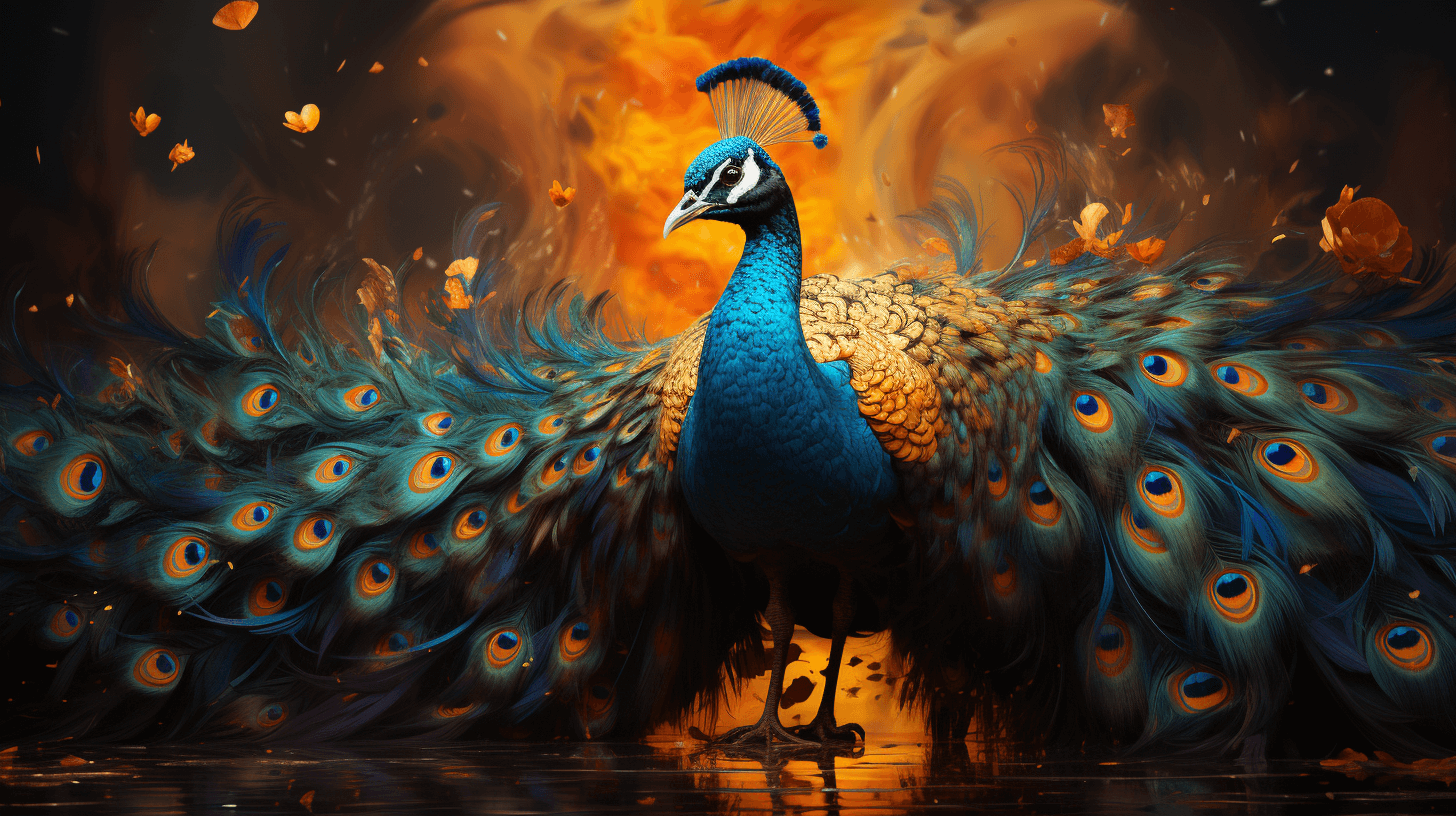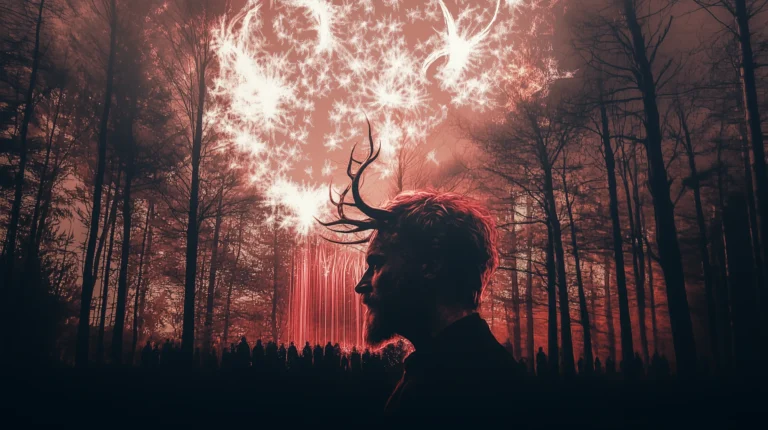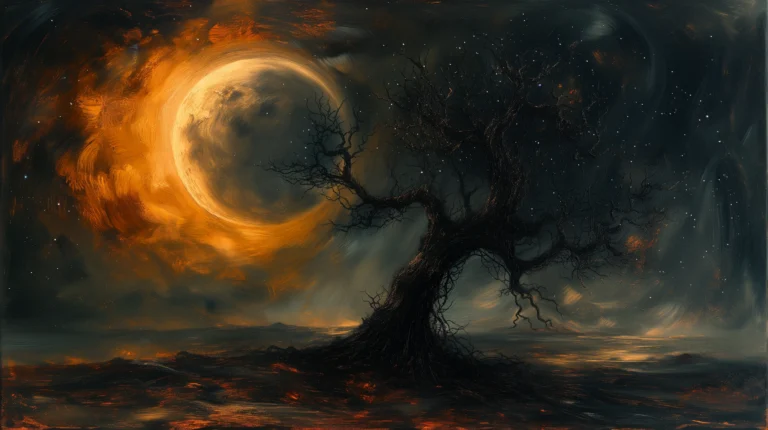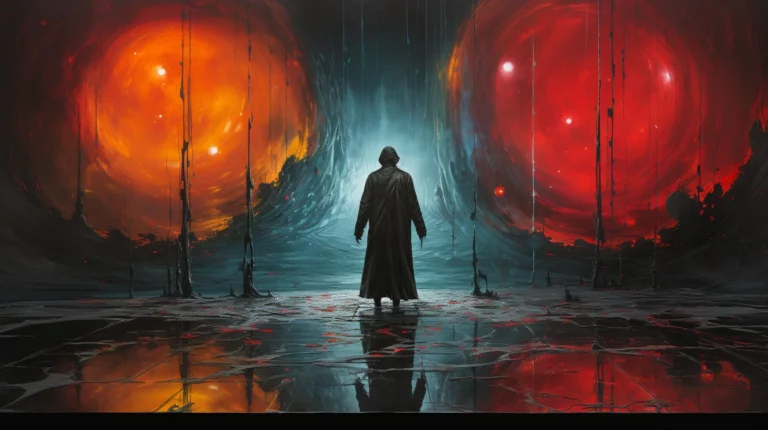The Peacock’s Tail Stage and the Philosopher’s Stone
Alchemy, one of the ancient precursors to modern chemistry, has fascinated scholars, artists, and spiritual seekers for centuries. Its symbolic language describes not just physical and chemical processes but deep psychological and spiritual transformations. One of the most intriguing symbols in alchemical literature is that of the peacock’s tail, a stage which is said to lead to the creation of the philosopher’s stone. But what does this symbol mean, and how does it relate to the concept of “coniunctio,” the union of opposites? Let’s delve deeper into the alchemical mystery.
The Philosopher’s Stone:
Before diving into the peacock’s tail, it’s essential to understand the final goal of the alchemical process: the Philosopher’s Stone. The stone is not a literal stone, but a symbol for spiritual enlightenment, wholeness, and the transformation of base materials into gold. It represents the culmination of the alchemical work, the final realization of unity within diversity, and the immortal essence that transcends the duality of life and death.
The Peacock’s Tail:
Described in many alchemical texts, the peacock’s tail stage, or “cauda pavonis,” appears as a stage where a multitude of colors appear, much like the iridescent tail of a peacock. This stage is emblematic of chaos, diversity, and the blossoming of potential. It’s the period where the material being worked upon breaks down, revealing its constituent parts in a dazzling display. This breakdown is essential because it paves the way for the unification that follows.
Coniunctio: The Divine Intermingling of Opposites
The term “coniunctio” in Latin means “union” or “joining.” In alchemical terms, it represents the merging or union of opposites, a sacred marriage of the polarities inherent in the universe. Whether it’s the union of sun and moon, king and queen, or any other set of dichotomies, the act of combining them leads to the birth of something new and transcendent. After the chaos and splendor of the peacock’s tail, the alchemical process aims to integrate these disparate elements into a harmonious whole.
The Dance of Opposites in the Alchemical Process:
The sequence is essential. Before achieving unity or synthesis, there must be a period of dissolution, of breaking down structures and identities. The peacock’s tail exemplifies this period of dissolution. By acknowledging and confronting the myriad elements (both desired and undesired) within the material (or within oneself), the alchemist sets the stage for the subsequent union.
Symbolism in Modern Psychology:
Carl Jung, the Swiss psychiatrist, recognized the profound psychological depth of alchemical symbols. For him, the process of individuation, or becoming one’s unique self, mirrored the alchemical journey. The peacock’s tail represented the acknowledgment of the colorful spectrum of our unconscious contents, and “coniunctio” was akin to integrating these elements into conscious awareness, leading to a richer, more holistic self.
The peacock’s tail stage in the alchemical process is not just a fleeting moment of aesthetic brilliance but a necessary phase of introspection, confrontation, and recognition. It prepares the path for the eventual union of opposites, the “coniunctio,” and the birth of the Philosopher’s Stone. This journey, rich in symbolism, offers a blueprint for spiritual seekers, reminding us that true unity can only come after acknowledging and embracing the diversity within.
Achieving the Peacock’s Tail Stage and Coniunctio
The journey to reach the peacock’s tail stage and ultimately the “coniunctio” is one of profound introspection, discipline, and transformation. Drawing upon various disciplines, including psychology, esoteric teachings, and even mindfulness practices, we can chart a roadmap for seekers eager to walk this path.
Self-Reflection and Shadow Work:
“Until you make the unconscious conscious, it will direct your life and you will call it fate.” – Carl Jung.
Carl Jung emphasized the significance of integrating the shadow, the unconscious aspect of our personality containing both our darkest fears and untapped potentials. Facing our shadow is akin to confronting the myriad colors of the peacock’s tail.
Practical Step: Begin with journaling. Every day, write down moments where you felt triggered, reactive, or unexpectedly emotional. Seek patterns and ask yourself why certain situations or comments touch you so deeply. This exercise can unveil hidden aspects of your psyche.
Meditation and Mindfulness:
Ancient esoteric teachings, especially from the East, have always stressed the importance of meditation. The act of simply being, observing without judgment, can mirror the dissolution necessary before the unity of coniunctio.
Practical Step: Start with a basic mindfulness practice. Sit quietly, focus on your breath, and observe your thoughts without getting attached. Over time, increase your meditation duration and explore other techniques like guided visualization or mantra chanting.
Embrace Duality:
“Out beyond ideas of wrongdoing and rightdoing, there is a field. I’ll meet you there.” – Rumi.
Esoteric teachings often remind us that the world of duality—right and wrong, good and evil, male and female—is an illusion. Embracing both aspects of these dualities within ourselves can lead to the union of opposites, the very heart of coniunctio.
Practical Step: Challenge yourself to see situations from opposing viewpoints. When confronted with a strong opinion or emotion, ask yourself, “What is its opposite? Can I see its validity?” This mental exercise can help in balancing dualities within.
Seek Guidance:
Throughout history, mystics, sages, and gurus have guided seekers on their spiritual journeys. Whether through literature, direct mentorship, or communal practices, guidance is invaluable.
Practical Step: Join a group or seek out teachers that resonate with your path. This could be a meditation group, a Jungian study circle, or an esoteric school. Being part of a community can offer insights and reflections that accelerate your journey.
Ritual and Symbolism:
Rituals have always played a crucial role in spiritual traditions, providing structure and symbolism to inner experiences. Engaging in rituals can help manifest the inner journey externally.
Practical Step: Create personal rituals. This could be as simple as lighting a candle before journaling or as elaborate as designing your own symbolic ceremonies. The power of rituals lies in their ability to focus intent and create sacred space for transformation.
Achieving the peacock’s tail stage and the subsequent coniunctio is a profound journey that demands commitment, introspection, and an open heart. By integrating practices from various disciplines, one can navigate this path with greater clarity and purpose, moving closer to the coveted Philosopher’s Stone – a symbol of enlightenment and wholeness.
The Divine Dance of Dichotomies and its Timeless Resonance
The alchemical journey, as intricate and multi-layered as it is, culminates in the profound realization of unity within diversity. At the core of this journey lies the concept of the “Divine Intermingling of Opposites,” which permeates not only alchemical teachings but also many spiritual and philosophical traditions across time and cultures.
The symbolism of dichotomies—like the union of the sun and moon, or the king and queen—is deeply entrenched in human consciousness. The sun and moon, potent symbols in their own right, are not merely celestial bodies. The sun represents the conscious mind, masculinity, and the active, illuminating aspects of our being. Conversely, the moon embodies the unconscious, femininity, and the introspective, reflective facets of the psyche. Their union signifies a harmonious balance, where consciousness and unconsciousness, masculinity and femininity, come together in a state of completeness and holistic understanding.
Similarly, the king and queen, frequently portrayed in alchemical and esoteric artworks, epitomize these masculine and feminine principles. Their sacred marriage symbolizes the profound integration of these energies, birthing something that transcends duality and is both complete and divine.
The “Dance of Opposites in the Alchemical Process” further elaborates on this theme. Before true unity or synthesis can manifest, there’s an essential period of dissolution. This dance, with its rhythmic push and pull, breakdown and renewal, chaos and order, mirrors the very pulse of life. Just as in the vibrant display of the peacock’s tail, where myriad colors are on show before they coalesce into a harmonious unity, our individual journeys often involve confronting and integrating diverse facets of ourselves.
Modern psychology, particularly the work of Carl Jung, resonates with these ancient alchemical teachings. Jung’s process of individuation, where one strives to integrate the shadow (the unconscious parts of oneself) into conscious awareness, echoes the alchemical transformation. In both disciplines, the journey is toward a richer, more holistic sense of self, achieved through the reconciliation of opposites.
In essence, the narrative of alchemy serves as a symbolic guide for the timeless human quest for wholeness. Whether viewed through the lens of ancient mysticism or contemporary psychology, the message is clear: embracing and integrating the vast spectrum of our being—our dualities, polarities, and contradictions—is the path to true enlightenment and self-realization. It’s a dance, a play, a merging of dichotomies that, when embraced fully, leads to the creation of the most precious Philosopher’s Stone: a life lived in authentic, harmonious fullness.







